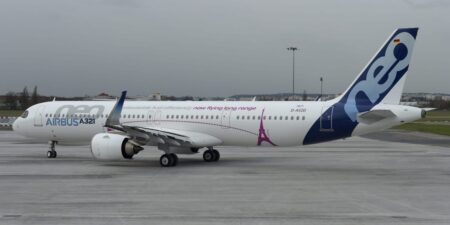With Tesla
TSLA
I think the shares — a mere 3.88% of which were sold short on March 28, according to the Wall Street Journal — are too expensive. How so?
- Tesla delivered far fewer vehicles than expected and forecasts more disappointment.
- Tesla appears hesitant about winning over value-sensitive buyers — leaving that segment of the market to lower-priced rivals such as BYD.
- Tesla’s pivot to Robotaxis has little chance of restoring revenue growth.
Tesla appears reluctant to lower prices enough to challenge Chinese rivals who offer consumers much more affordable EVs. As a result, one analyst appears to be losing patience with Tesla’s disappointing growth.
Tesla reportedly will cut “more than 10%” of its roughly 140,000 workers, according to Reuters. “As we prepare the company for our next phase of growth, it is extremely important to look at every aspect of the company for cost reductions and increasing productivity,” Tesla CEO Elon Musk said in an internal memo cited by Reuters.
Tesla’s pivot to robotaxis and layoffs appear unlikely to accelerate the company’s revenue growth.
I contacted Tesla and will update this post should I receive a comment.
Tesla Is Falling Short Of Investor Expectations
The brakes have been slammed on Tesla’s growth. As I wrote in an April 2024 Forbes post, Tesla issued a weak fourth quarter report and delivered below-expectations guidance for 2024. The auto maker’s operating margin fell by half and first quarter 2024 vehicle deliveries missed the analyst consensus significantly.
Here are the key numbers:
- Q4 2023 revenue: $25.17 billion — up 3% from Q4 2023 and about $500 million short of London Stock Exchange Group expectations. A “reduced average selling price following steep price cuts around the world in the second half of the year” contributed to the meager revenue growth, according to CNBC.
- Q4 2023 operating margin: 8.2% — roughly half the Q4 2023 figure, CNBC reported.
- 2024 vehicle volume forecast: Electric vehicle volume growth in 2024 “may be notably lower” than the rate observed last year, as Tesla “shipped 1.8 million cars in 2023,” CNBC wrote. The absence of a specific 2024 production target departed from previous years. In 2023, deliveries rose 38% — well short of the 50% target. Analysts predict a 20% increase in 2024, noted Bloomberg.
- 2024 Q1 vehicle deliveries: 386,810 — 14% below the “analyst consensus estimate of 449,080,” noted an April email from investment manager, Louis Navellier.
Could Tesla be trying to lower investor expectations enough to exceed them when the company reports first quarter 2024 financial results on April 23?
Tesla Is Running Away From Customers And Competition
Consumers are getting far more value-sensitive — meaning they want a safe, low-cost way to drive. As I wrote in a January 2024 Forbes post, lower gasoline prices, relatively high EV prices, long battery charging times, and significant range anxiety are among the challenges EV makers must overcome to win customers.
China-based rivals BYD and Li Auto are responding to these consumer preferences by setting much lower prices for their EVs, according to the Wall Street Journal, thus capturing Chinese market share from Tesla.
With Tesla’s Model 3 and Model Y accounting for 96% of Tesla’s first-quarter deliveries, pressure on Tesla to introduce its Model 2 has become “imperative,” noted Navellier.
Rather than compete for value-sensitive customers, Tesla appears to be running away from them. “Reuters reported Tesla had scrapped its plans for a long-promised, lower-cost electric vehicle, known as the Model 2. Musk denied the report by saying ‘Reuters is lying,’ ” noted MarketWatch.
One analyst expressed distrust of Musk’s response to the Model 2 cancellation report. There is “little evidence that it is aggressively in progress, as we would expect for a car due to start producing at commercial scale at the end of next year, per Elon’s latest dubious promise,” noted Vicki Bryan, founder and CEO of the Bond Angle LLC, in an email featured by MarketWatch.
Is Tesla unwilling or unable to sacrifice profitability to offer EVs that consumers view as delivering more bang for the buck than, say, BYD’s $25,000 Seal sedan?
Tesla’s Robotaxi Is Unlikely To Boost Growth
Musk has a track record of changing the subject when Tesla disappoints. For example, in January 2024, he told investors in an earnings call how excited he was about shipping Optimus robots after the company’s weak results, CNBC reported.
During that call, he hyped the Cybertruck — saying Tesla could make 125,000 per year with demand for the vehicle exceeding the company’s ability to produce them, noted CNBC.
Tesla is falling short of that ambitious vision. Cybertruck production shifts were shortened at the company’s Austin, Texas Gigafactory, according to Business Insider.
Last week, Musk touted an August reveal of a robotaxi — a self-driving vehicle with no ability for drivers to take control. In my view, Tesla’s robotaxi is unlikely to boost the company’s revenue growth. Here are some reasons for skepticism:
Tesla Lags Waymo In Launching A Robotaxi Fleet
Tesla is far behind Waymo, the robotaxi industry leader, which is not close to building a significant business.
Waymo’s fleet has driven 20 billion miles and now runs commercial robotaxi services in San Francisco and Phoenix and launched operations last week in Los Angeles.
Sadly, there are good reasons for consumers to avoid robotaxis. For example, in February 2024, a Waymo driverless vehicle “collided with a cyclist in San Francisco at a four-way intersection, where the cyclist was initially blocked from view by a truck,” noted MarketWatch.
Tesla Self-Driving Technology Is Flawed
Robotaxis depend on self-driving technology, which Tesla has yet to master. Musk has been encouraging new Tesla customers to purchase the driver-assistance system “while also defending against litigation that it doesn’t work as promoted,” according to the Wall Street Journal.
Tesla’s Full Self-Driving technology is a misnomer because the $12,000 one-time fee requires drivers to maintain attention on the road. Moreover, should there be an accident while FSD is engaged, Tesla holds the driver legally responsible, noted the Journal.
In October 2019, Musk predicted Tesla would have one million robotaxis on the road in 2020, according to The Drive — a million more than Tesla had produced in April 2024.
“They are clearly years away from getting there,” Philip Koopman, associate professor of electrical and computer engineering at Carnegie Mellon University, told MarketWatch.
“This is a multi-year problem. Any claim of ‘we are going to solve it right away, even though we clearly haven’t solved it, but in less than 12 months it will be solved and then ready to scale,’ is just not a credible claim by anyone, I see no evidence that that is achievable by anyone anytime soon. Nobody is close,” Koopman added.
Tesla investors have reason to be skeptical of Musk’s boasts about the company’s robotaxi business.
Tesla Reportedly Lacks State Regulatory Permits To Operate Robotaxis
If Tesla has finally mastered the technology for the robotaxi, it will need state regulatory approval to operate a fleet of them. Robotaxi regulators in Arizona, California and Nevada have not been contacted by Tesla to apply for permits, according to NBC News.
“Tesla’s a long way away from getting that approval,” Brad Templeton, a consultant in the autonomous vehicle industry, told NBC News. Tesla “didn’t immediately respond” to NBC News’ request for comment.
What Analysts Expect For Tesla Stock
Will Tesla stock rise from here? Based on 35 Wall Street analysts offering 12-month price targets for Tesla, the average of $196.72 per share represents 15% upside, notes TipRanks.
These price targets can yield investor confusion. Why did Wedbush analyst Dan Ives set a $300 per share price target for Tesla while writing “Musk has two weeks to turn the ship around,” in an April 11 investor note featured by MarketWatch?
Ives seems poised to lower his rating on Tesla unless Musk explains in an April 23 earnings call how the company will boost revenue growth. He wants to see Musk’s detailed plan for launching the Model 2 in late 2025 and how Tesla will compete more effectively in the sub-$30,000 EV segment — which accounts for 60% of Ives’ growth forecast, noted MarketWatch.
If Musk talks about the robotaxi without offering “the growth strategy for Tesla in China (and globally) to reverse this negative demand trend,” Ives could lower his price target for the company, MarketWatch reported.
Why wait until then to bet on a decline in Tesla’s stock price?
Read the full article here
















